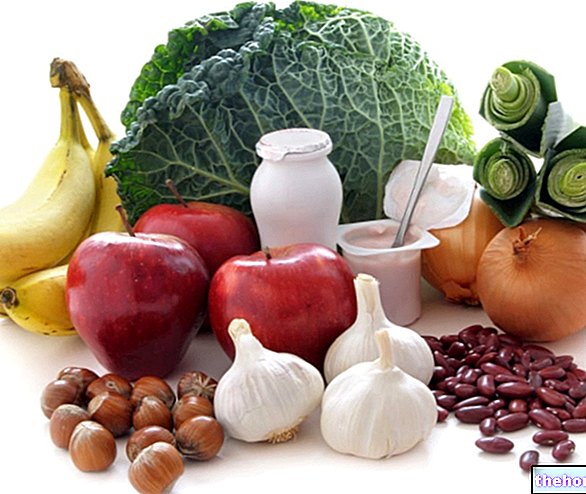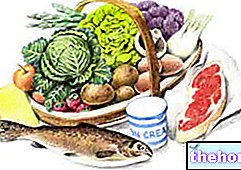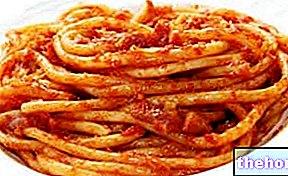Definition of food
Foods are LIQUID or SOLID, PROCESSED, SEMI-PROCESSED or RAW substances, to be taken with the aim of:
- Restore, maintain or improve the energy balance of the organism
- Provide nutrients or other molecules that are important for maintaining overall homeostasis or for tissue growth and repair processes
- Give "pleasant sensations" thanks to its organoleptic properties.
Food regulation: Legislative Decree (DL) 109 of 27 January 1992.
Classify foods

On the other hand, in addition to the criterion of nutritional prevalence used to divide the 7 basic food groups, other parameters can be used such as: the ORIGIN of the food (whether vegetable, animal or fungal), the CONCENTRATION IN MACRONUTRIENTS ENERGETIC (proteins, lipids, carbohydrates) and the NUTRITIONAL FUNCTION (plastic, energetic, regulatory).
Foodstuffs
Today, in addition to the classic foods of the categories mentioned above, on the market it is possible to find some PARTICULAR products: these are new food products. Essentially, these represent the study and "application of industrial goods (especially marketing) useful for increasing sales and company earnings. The" vaguely acidic "definition PERSONALLY I attribute to new food products derives above all from the fact that OFTEN (therefore NOT always ... but almost!) this sector is totally exposed to the scientific exploitation (therefore fictitious or in any case not appropriately proven on the human organism) of companies to promote sales.
The new food products, in addition to the basic nutritional "standard", promise numerous health effects that vary according to the specific food; this characteristic can only "mess up" the concepts (already quite confusing in themselves) that professionals try to pass on to their clients. Ultimately, with the advent of new food products, in addition to the difficulty in changing lifestyle and nutrition, today professionals also have the task of to educate the population on the real function of these foods and disprove their essentiality in the dietary regime.
They are new food products:
- Organic food and / or natural food
- Whole foods
- Light or "light" foods
- Fortified, enriched, supplemented foods
- Functional foods
- Innovative foods (novel foods)
It is obvious that, between the various food groups mentioned above, there are significant differences both in terms of utility and nutritional contextualization (comparing the group of organic foods to that of light or light foods, the difference is obvious!); However, it is it is appropriate to specify that the new food products are ALL in common for the NON-essentiality within the collective diet.
Diet foods
Even dietetic foods are NOT essential products for human nutrition, on the other hand, in some circumstances their use can be much more useful than the previous category; for this reason, dietary foods are regulated by the EEC directive 89/398 which describes all products intended for a "particular" diet, specifying their field of application.
In summary, dietary foods must comply with particular nutritional needs such as:
- defects in absorption or metabolic alterations
- particular physiological conditions (gestation and breastfeeding)
- weaning and early childhood (if in good health).
Dietetic foods are NOT products for everyday use and must have a specific nutritional goal; THEY ARE NOT FOOD SUPPLEMENTS, they must be distinguished from commonly used foods, they must be suitable for the indicated nutritional objective and are marketed indicating compliance with this objective. Examples are foods for celiacs (gluten-free), products for diabetics and dietary salts.
Bibliography: Food and health –S. Rodato, I. Gola - Clitt - page 158: 201.




























